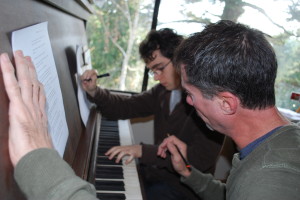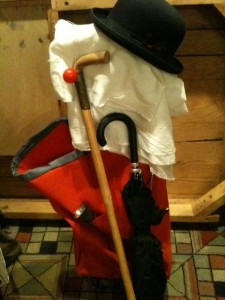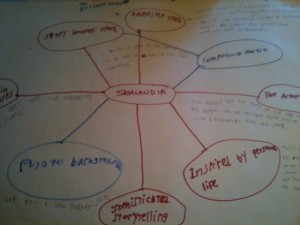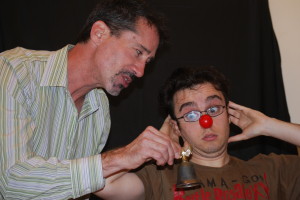Umwelt |ˈoŏmˌvelt|
noun ( pl. -welten |-ˌvelt(ə)n|)
(in ethology: the study of human behavior and social organization from a biological perspective) the world as it is experienced by a particular organism.
There are many ways that I move about my life. I call them practices. These “practices” have gone into creating Samlandia: √ Conceptual, √ Theoretical, √ Production, √ Writing, √ Movement, √ Collaborative, √ Funding… …as well, as personal practices such as Meditation, Reading, and other disciplines that inform my life and my work. The intersection of these various disciplines is the construction zone for this production.
Music Practice: One of my earliest memories is of carrying around a little violin that someone gave me. I would stand in front of the TV, with a video tape of violinist Nigel Kennedy playing Vivaldi’s Four Seasons (<– you can hear it here), my blanket hanging off my shoulder and I would mimic Nigel…his movements, the movement of the bow on the violin strings. My parents picked up on my attraction to classical music as an inroad to my intelligence and built upon that foundation. My mother would play classical CD’s for me. It was a game I really loved, even when I couldn’t talk.
By second grade, my language was coming back on-line, haltingly, but I was trying. Despite the language glitches, I could sing and I had perfect recall of any musical piece I heard. I auditioned and was accepted into a boychoir. My mother would sit behind the teacher during rehearsals where I could see her and hold signs up to signal me to point my eyes to the teacher, or to stand up straight, or to try not to wiggle. And even though, initially, I held the music upside down (because I couldn’t read), my perfect pitch ability gave me the ability to know the music and sing it, after I’d heard it the first time. I stayed with the choir through fifth grade.
Then, I took a break and began to attend operas at both the San Francisco Opera and the Merola Opera Company. I loved the grandeur of Opera. To date, I have attended over forty operas and over one hundred symphonies in person, in addition to constantly listening to music on my various technical devices (CD’s, iPod, etc.). I have an extensive sound library. As you can see, I wasn’t particularly a jock.
I have been studying bel canto singing 1:1 with Peter Maleitzke for the past four and a half years and am currently producing my first album (of songs from the late 1800’s and early 1900’s which I will be singing) which should be read to roll out by June 2014. As well, I am composing the music for Samlandia. And, we expect the show to be up and running by some time in March 2014.
[PS: For fun (!), take a few minutes to listen to this amazing musical posting, an invention by Leonardo da Vinci called the VIOLA ORGANISTA. Pay particular attention to the sound between 6:19 and 6:43.]




